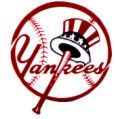

www.TNYY.net

Origins (1901-1902)
At the end of the 1900 season, the American League reorganized, and, with AL president Ban Johnson as the driving force, decided to assert itself as a new major league. Known as the Western League until 1899, the AL carried over five of its previous locations and added teams in three East Coast cities, including Baltimore, Maryland. Baltimore had lost its National League team in 1899 when that league eliminated four teams. The original plan was to put a team in New York City, but the NL's New York Giants had political connections with Tammany Hall and kept the AL out.
The team was known as the Baltimore Orioles and began playing in 1901 with John McGraw as manager. McGraw feuded with Johnson, who rigidly enforced the rules about rowdiness on the field of play, and jumped leagues to manage the Giants in the middle of the 1902 season. A week later, the owner of the Giants gained controlling interest of the Orioles and raided the teams for players. The AL stepped in and took control of the team, still hoping to move the team to New York.
In January 1903, a "peace conference" was held between the two leagues to settle disputes and try to find a way to coexist. One of the results of the conference was that the NL agreed to let the "junior circuit" establish a franchise in New York. The Oriole's new owners, Frank Farrell and William Devery, found a ballpark location not blocked by the Giants, and Baltimore's team moved to New York.
At the end of the 1900 season, the American League reorganized, and, with AL president Ban Johnson as the driving force, decided to assert itself as a new major league. Known as the Western League until 1899, the AL carried over five of its previous locations and added teams in three East Coast cities, including Baltimore, Maryland. Baltimore had lost its National League team in 1899 when that league eliminated four teams. The original plan was to put a team in New York City, but the NL's New York Giants had political connections with Tammany Hall and kept the AL out.
The team was known as the Baltimore Orioles and began playing in 1901 with John McGraw as manager. McGraw feuded with Johnson, who rigidly enforced the rules about rowdiness on the field of play, and jumped leagues to manage the Giants in the middle of the 1902 season. A week later, the owner of the Giants gained controlling interest of the Orioles and raided the teams for players. The AL stepped in and took control of the team, still hoping to move the team to New York.
In January 1903, a "peace conference" was held between the two leagues to settle disputes and try to find a way to coexist. One of the results of the conference was that the NL agreed to let the "junior circuit" establish a franchise in New York. The Oriole's new owners, Frank Farrell and William Devery, found a ballpark location not blocked by the Giants, and Baltimore's team moved to New York.
The Highlanders (1903-1912)
Hilltop Park, home of the HighlandersThe ballpark was Hilltop Park and it was located at 165th Street and Broadway in Manhattan, near the highest point on the island. Publisher William Randolph Hurst's New York Evening Journal referred to them as the "Invaders" in 1903, but switched in the spring of 1904 to the name that would eventually stick: the New York Highlanders. The name was a reference to the team's location and also to the noted British military unit The Gordon Highlanders, which fit as the team's president from 1903 to 1906 was Joseph Gordon.
As the Highlanders, the team enjoyed success only twice, finishing second place in 1904 and 1910. Much of the team's Hilltop Park days were spent in the cellar. It's somewhat corrupt ownership and a few questionable activities by some of the players (most notable first baseman Hal Chase) raised suspicions of game-fixing. Such suspicions, however, have never been proven.
The high point of the Highlander's existence came on the last day of the 1904 season at Hilltop Park. New York pitcher Jack Chesbro threw a wild pitch in the ninth inning which allowed the eventual pennant-winning run to score for the Boston Americans.
This had historical significance in several ways. First of all, the presence of the Highlanders in the race led to the Giants' announcement that they would not participate in the World Series, claiming they would not play a "minor league" team. Although Boston had won instead, the Giants stuck by their word and still refused to participate. The resulting backlash by the press caused Giants owner John T. Brush to take a stance and lead the committee to formalize the rules governing the World Series. This would be the last time until the strike-truncated year of 1994 that the World Series would not be played. It would also be the last time for a century that the Boston AL team, who would later formally become the Red Sox in 1908, would beat the New York AL team in a pennant-deciding game.
Hilltop Park, home of the HighlandersThe ballpark was Hilltop Park and it was located at 165th Street and Broadway in Manhattan, near the highest point on the island. Publisher William Randolph Hurst's New York Evening Journal referred to them as the "Invaders" in 1903, but switched in the spring of 1904 to the name that would eventually stick: the New York Highlanders. The name was a reference to the team's location and also to the noted British military unit The Gordon Highlanders, which fit as the team's president from 1903 to 1906 was Joseph Gordon.
As the Highlanders, the team enjoyed success only twice, finishing second place in 1904 and 1910. Much of the team's Hilltop Park days were spent in the cellar. It's somewhat corrupt ownership and a few questionable activities by some of the players (most notable first baseman Hal Chase) raised suspicions of game-fixing. Such suspicions, however, have never been proven.
The high point of the Highlander's existence came on the last day of the 1904 season at Hilltop Park. New York pitcher Jack Chesbro threw a wild pitch in the ninth inning which allowed the eventual pennant-winning run to score for the Boston Americans.
This had historical significance in several ways. First of all, the presence of the Highlanders in the race led to the Giants' announcement that they would not participate in the World Series, claiming they would not play a "minor league" team. Although Boston had won instead, the Giants stuck by their word and still refused to participate. The resulting backlash by the press caused Giants owner John T. Brush to take a stance and lead the committee to formalize the rules governing the World Series. This would be the last time until the strike-truncated year of 1994 that the World Series would not be played. It would also be the last time for a century that the Boston AL team, who would later formally become the Red Sox in 1908, would beat the New York AL team in a pennant-deciding game.
New Owners, A New Home, and a New Name (1913-1922)
The Polo Grounds, home of the Yankees from 1913 to 1922Relations had warmed between the Highlanders and their National League rivals the Giants, who had tried years before to keep the team out of New York. In 1911 the Polo Grounds, home of the Giants, was mostly destroyed in a fire, and the Highlanders let the Giants play in Hilltop Park while the Polo Grounds was being reconstructed. In 1913, the Highlanders moved into the reconstructed Polo Grounds after their agreement to play at Hilltop Park ended. Now playing on the Harlem river, a far cry from their high-altitude home, the "Highlanders" name had no meaning. The name "Yankees" was occasionally applied to the club as a variant on "Americans". On April 7, 1904, a spring training story from Richmond, Virginia carried the headline "Yankees Will Start Home From South To-Day." The New York Evening Journal screamed: "YANKEES BEAT BOSTON". Now, in 1913, the New York Highlanders officially changed their name to the New York Yankees, which would be the team's name until present day.
By the mid 1910's, owners Farrell and Devery had become estranged, and they were both in dire need of money. At the start of 1915, the duo sold the team to Colonel Jacob Ruppert and Captain Tillinghast L'Hommedieu Huston. Ruppert inherited a brewery fortune and had also been tied to the Tammany Hall machine, serving as a Congressman for eight years. He was later quoted as saying, "For $450,000, we got an orphan ball club without a home of its own, without players of outstanding ability, without prestige." However, they now had an owner possessing deep pockets and a willingness to dig into them to produce a winning team. The Yankees were on their way to acquiring more prestige than Ruppert could have ever envisioned.
The Polo Grounds, home of the Yankees from 1913 to 1922Relations had warmed between the Highlanders and their National League rivals the Giants, who had tried years before to keep the team out of New York. In 1911 the Polo Grounds, home of the Giants, was mostly destroyed in a fire, and the Highlanders let the Giants play in Hilltop Park while the Polo Grounds was being reconstructed. In 1913, the Highlanders moved into the reconstructed Polo Grounds after their agreement to play at Hilltop Park ended. Now playing on the Harlem river, a far cry from their high-altitude home, the "Highlanders" name had no meaning. The name "Yankees" was occasionally applied to the club as a variant on "Americans". On April 7, 1904, a spring training story from Richmond, Virginia carried the headline "Yankees Will Start Home From South To-Day." The New York Evening Journal screamed: "YANKEES BEAT BOSTON". Now, in 1913, the New York Highlanders officially changed their name to the New York Yankees, which would be the team's name until present day.
By the mid 1910's, owners Farrell and Devery had become estranged, and they were both in dire need of money. At the start of 1915, the duo sold the team to Colonel Jacob Ruppert and Captain Tillinghast L'Hommedieu Huston. Ruppert inherited a brewery fortune and had also been tied to the Tammany Hall machine, serving as a Congressman for eight years. He was later quoted as saying, "For $450,000, we got an orphan ball club without a home of its own, without players of outstanding ability, without prestige." However, they now had an owner possessing deep pockets and a willingness to dig into them to produce a winning team. The Yankees were on their way to acquiring more prestige than Ruppert could have ever envisioned.
The Ruth and Gehrig era and the Stadium (1923-1935)
In the years around 1920, the Yankees had a detente with the Boston Red Sox and the Chicago White Sox. The three were called the "Insurrectos" due to the way their actions antagonized League President Johnson, as opposed to the other five teams of the league, who were known as "the Loyal Five". This detente paid off well for the Yankees, as the two new owners would begin to enlarge the payroll. Many of these new players who would later contribute to the team's success came from the Boston Red Sox. The owner of the Red Sox, theater impresario Harry Frazee, had bought the team on credit and needed to pay off his loans and purchase Fenway Park from the Fenway Park Trust. Without ownership of Fenway, Johnson could easily put another team in. The Red Sox were also the strongest of the "Insurrectos" and faced a large amount of costly legal battles.
Babe Ruth in 1920, the first year he joined the YankeesFrom 1919 to 1922, the Yankees acquired pitchers Waite Hoyt, Carl Mays and Herb Pennock, catcher Wally Schang, shortstop Everett Scott and third baseman Joe Dugan, all from the Red Sox.
However, pitcher-turned-outfielder Babe Ruth was the most talented of them all. The Babe accumulated 2,213 RBIs over his career (ranking second in Major League history), totaled 1,971 as a Yankee (ranking second in Yankee team history), and was the owner of the single season home run record in 1919. Ruth came to New York in January of 1920. Frazee cited Ruth's demand for a raise after being paid the highest salary in baseball as the reason for the trade. Frazee also wished to aid the Yankees, who had taken his side in the legal battles against Ban Johnson. The situation was not helped by the fact that Ruth was regarded as a problem, a carouser. This would continue in his Yankee years, but the New York ownership was more tolerant as long as he brought fans and championships to the ballpark.
The outcome of the trade would haunt the Red Sox for the next 84 years. They would not win a World Series after 1919 until 2004, often finding themselves eliminated from the hunt as a result of the success of the Yankees. This phenomenon was known as the Curse of the Bambino as the failure of the Red Sox and the success of the Yankees seemed almost supernatural, and all seemed to stem from that one trade.
Other important newcomers in this period were manager Miller Huggins and general manager Ed Barrow. Huggins was hired in 1919 by Ruppert while Huston was serving in Europe with the American army. This would later lead to a break between the two owners, with Ruppert eventually buying Huston out in 1923). Barrow came on board after the 1920 season, and, like many of the new Yankee players, had previously been a part of the Red Sox organization, their manager since 1918. He would act as general manager or president of the Yankees for the next 25 years, and may deserve the bulk of the credit for the team's success during that period. He was especially noted for development of the Yankees' farm system.
In the years around 1920, the Yankees had a detente with the Boston Red Sox and the Chicago White Sox. The three were called the "Insurrectos" due to the way their actions antagonized League President Johnson, as opposed to the other five teams of the league, who were known as "the Loyal Five". This detente paid off well for the Yankees, as the two new owners would begin to enlarge the payroll. Many of these new players who would later contribute to the team's success came from the Boston Red Sox. The owner of the Red Sox, theater impresario Harry Frazee, had bought the team on credit and needed to pay off his loans and purchase Fenway Park from the Fenway Park Trust. Without ownership of Fenway, Johnson could easily put another team in. The Red Sox were also the strongest of the "Insurrectos" and faced a large amount of costly legal battles.
Babe Ruth in 1920, the first year he joined the YankeesFrom 1919 to 1922, the Yankees acquired pitchers Waite Hoyt, Carl Mays and Herb Pennock, catcher Wally Schang, shortstop Everett Scott and third baseman Joe Dugan, all from the Red Sox.
However, pitcher-turned-outfielder Babe Ruth was the most talented of them all. The Babe accumulated 2,213 RBIs over his career (ranking second in Major League history), totaled 1,971 as a Yankee (ranking second in Yankee team history), and was the owner of the single season home run record in 1919. Ruth came to New York in January of 1920. Frazee cited Ruth's demand for a raise after being paid the highest salary in baseball as the reason for the trade. Frazee also wished to aid the Yankees, who had taken his side in the legal battles against Ban Johnson. The situation was not helped by the fact that Ruth was regarded as a problem, a carouser. This would continue in his Yankee years, but the New York ownership was more tolerant as long as he brought fans and championships to the ballpark.
The outcome of the trade would haunt the Red Sox for the next 84 years. They would not win a World Series after 1919 until 2004, often finding themselves eliminated from the hunt as a result of the success of the Yankees. This phenomenon was known as the Curse of the Bambino as the failure of the Red Sox and the success of the Yankees seemed almost supernatural, and all seemed to stem from that one trade.
Other important newcomers in this period were manager Miller Huggins and general manager Ed Barrow. Huggins was hired in 1919 by Ruppert while Huston was serving in Europe with the American army. This would later lead to a break between the two owners, with Ruppert eventually buying Huston out in 1923). Barrow came on board after the 1920 season, and, like many of the new Yankee players, had previously been a part of the Red Sox organization, their manager since 1918. He would act as general manager or president of the Yankees for the next 25 years, and may deserve the bulk of the credit for the team's success during that period. He was especially noted for development of the Yankees' farm system.
The home run hitting exploits of Ruth proved so popular with the public that they began drawing more people than their landlords,
the Giants. In 1921, when the Yankees made their first World Series appearance, which was against the Giants, the Yankees were told
to move out of the Polo Grounds after the 1922 season. John McGraw was said to have commented that the Yankees should "move to some
out-of-the-way place, like Queens". Instead, to McGraw's chagrin, the Yankees broke ground for a new ballpark in the Bronx, right
across the Harlem River form the Polo Grounds. In 1922, the Yankees returned to the World Series again, facing a second defeat at
the hands of the Giants. Meanwhile, the construction crew moved with remarkable speed and finished the new ballpark in less than a
year.
In 1923, the Yankees moved to their new home, Yankee Stadium at East 161st Street and River Avenue. This site was chosen because the IRT Jerome Avenue subway line (now the NYCTA's number 4 train) had a station stop practically on top of the stadium's outfield walls. It was the first triple-deck venue in baseball and seated an astounding 58,000. In the first game at Yankee Stadium, Babe Ruth hit a home run, which was fitting as it was his home runs and drawing power that paid for the stadium, giving it its nickname "The House That Ruth Built". He would end the year with "only" 41 home runs, but he was walked a then record 170 times, and batted .393, still the highest batting average for a Yankee in Yankee Stadium.
That year, the first year in their new stadium, the Yanks faced the Giants for the third straight year in the Series. Giants outfielder Casey Stengel, who even then was being called "Old Case", hit two home runs to win the two games the Giants came away with, but the Yankees finally triumphed. Stengel would later come to the Yankees as a successful manager.
The 1927 Yankees lineup was so potent that it has become known as "Murderers' Row", and some consider the team to be the best in the history of baseball . (though similar claims have been made for other Yankee squads, notably those of 1939, 1961 and 1998). The Yankees won an AL record 110 games with only 44 losses, and swept the Pittsburgh Pirates in the 1927 World Series. Ruth's home run total of 60 in 1927 set a single-season home run record that would stand for 34 years. He also batted .356 and drove in 164 runs. Meanwhile, first baseman Lou Gehrig had his first big season, batting .373 with 47 round-trippers and 175 RBI's, beating Ruth's single-season RBI mark (171 in 1921).
Ruth hit third in the order, and Gherig hit cleanup Right behind them were two more sluggers: Bob "The Rifle" Meusel, who played either of the corner outfield positions, and Tony Lazzeri, who played second base. Lazzeri actually ranked third in the league in home runs in 1927 with 18, and he hit .309 with 102 RBI's. Meusel hit .337 with 103 RBI's. Speed was another weapon used by both: Lazzeri stole 22 bases while Meusel was second in the league with 24. These numbers were all due, in part, to center fielder and leadoff man Earle Combs. He hit .356, had a .414 on base percentage, and lead the AL with 231 hits that year (a team record until Don Mattingly broke it in 1986 with 283). The team's overall batting average in 1927 was .307.
The Yankees would repeat as American League champions in 1928, fighting off the resurgent Philadelphia Athletics. They would then go on to sweep the St. Louis Cardinals in the 1928 World Series. Ruth got 10 hits in 16 at-bats, his .625 average setting a new single-series record. Three of these hits were home runs. Meanwhile, Gehrig went 6 for 11 (.545), going yard four times.
In the next three years, the Athletics would take the AL pennant and two world championships. In 1932, Joe McCarthy came in as manager, and would restore the Yankees to the top of the AL. They met the Chicago Cubs in the 1932 World Series, sweeping them and bringing the team's streak of consecutive World Series game wins to 12 (a mark which would stand until the Yankees bested it in the 2000 World Series). This series was made famous by Babe Ruth's famous "Called Shot" in game three of the series at Wrigley Field. This would be a fitting "swan song" to his illustrious postseason career, as Ruth would leave the Yankees, going to the NL Boston Braves after 1934, and would never see the postseason again.
In 1923, the Yankees moved to their new home, Yankee Stadium at East 161st Street and River Avenue. This site was chosen because the IRT Jerome Avenue subway line (now the NYCTA's number 4 train) had a station stop practically on top of the stadium's outfield walls. It was the first triple-deck venue in baseball and seated an astounding 58,000. In the first game at Yankee Stadium, Babe Ruth hit a home run, which was fitting as it was his home runs and drawing power that paid for the stadium, giving it its nickname "The House That Ruth Built". He would end the year with "only" 41 home runs, but he was walked a then record 170 times, and batted .393, still the highest batting average for a Yankee in Yankee Stadium.
That year, the first year in their new stadium, the Yanks faced the Giants for the third straight year in the Series. Giants outfielder Casey Stengel, who even then was being called "Old Case", hit two home runs to win the two games the Giants came away with, but the Yankees finally triumphed. Stengel would later come to the Yankees as a successful manager.
The 1927 Yankees lineup was so potent that it has become known as "Murderers' Row", and some consider the team to be the best in the history of baseball . (though similar claims have been made for other Yankee squads, notably those of 1939, 1961 and 1998). The Yankees won an AL record 110 games with only 44 losses, and swept the Pittsburgh Pirates in the 1927 World Series. Ruth's home run total of 60 in 1927 set a single-season home run record that would stand for 34 years. He also batted .356 and drove in 164 runs. Meanwhile, first baseman Lou Gehrig had his first big season, batting .373 with 47 round-trippers and 175 RBI's, beating Ruth's single-season RBI mark (171 in 1921).
Ruth hit third in the order, and Gherig hit cleanup Right behind them were two more sluggers: Bob "The Rifle" Meusel, who played either of the corner outfield positions, and Tony Lazzeri, who played second base. Lazzeri actually ranked third in the league in home runs in 1927 with 18, and he hit .309 with 102 RBI's. Meusel hit .337 with 103 RBI's. Speed was another weapon used by both: Lazzeri stole 22 bases while Meusel was second in the league with 24. These numbers were all due, in part, to center fielder and leadoff man Earle Combs. He hit .356, had a .414 on base percentage, and lead the AL with 231 hits that year (a team record until Don Mattingly broke it in 1986 with 283). The team's overall batting average in 1927 was .307.
The Yankees would repeat as American League champions in 1928, fighting off the resurgent Philadelphia Athletics. They would then go on to sweep the St. Louis Cardinals in the 1928 World Series. Ruth got 10 hits in 16 at-bats, his .625 average setting a new single-series record. Three of these hits were home runs. Meanwhile, Gehrig went 6 for 11 (.545), going yard four times.
In the next three years, the Athletics would take the AL pennant and two world championships. In 1932, Joe McCarthy came in as manager, and would restore the Yankees to the top of the AL. They met the Chicago Cubs in the 1932 World Series, sweeping them and bringing the team's streak of consecutive World Series game wins to 12 (a mark which would stand until the Yankees bested it in the 2000 World Series). This series was made famous by Babe Ruth's famous "Called Shot" in game three of the series at Wrigley Field. This would be a fitting "swan song" to his illustrious postseason career, as Ruth would leave the Yankees, going to the NL Boston Braves after 1934, and would never see the postseason again.
2000 • 1999 • 1998 • 1996
1978 • 1977 • 1962 • 1961
1958 • 1956 • 1953 • 1952
1951 • 1950 • 1949 • 1947
1943 • 1941 • 1939 • 1938
1937 • 1936 • 1932 • 1928
1927 • 1923
1978 • 1977 • 1962 • 1961
1958 • 1956 • 1953 • 1952
1951 • 1950 • 1949 • 1947
1943 • 1941 • 1939 • 1938
1937 • 1936 • 1932 • 1928
1927 • 1923
World Series Titles (26)
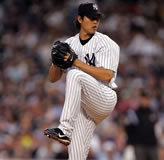




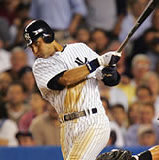
1901 - 1935 (Part 1 of 4)

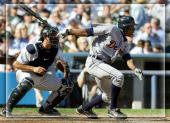

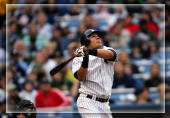
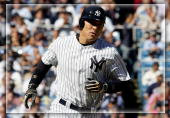
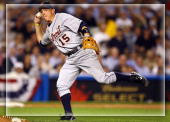
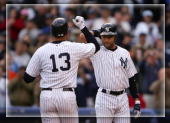
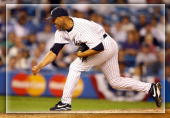
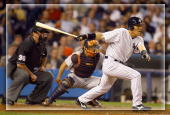
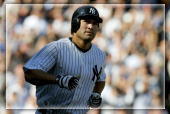
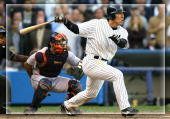
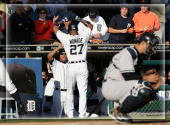
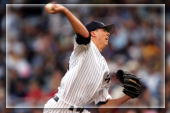
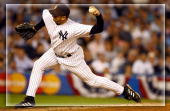
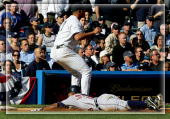
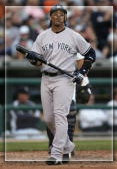
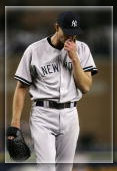
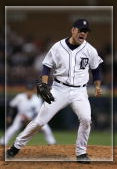
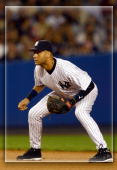
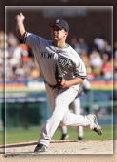
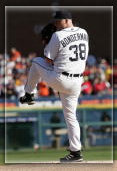
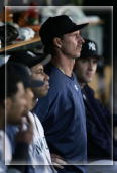
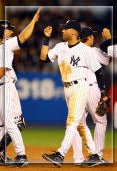
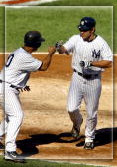
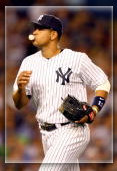
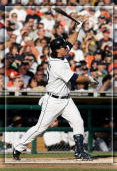
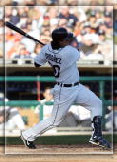
Also visit:
History > 1901 - 1935
Copyright © www.TNYY.net. All Rights Reserved.
In affiliation with BUY.sc.
Visit Our Sponsors